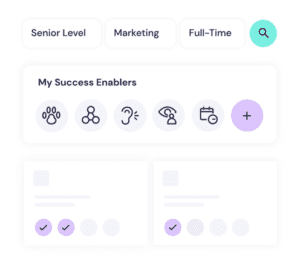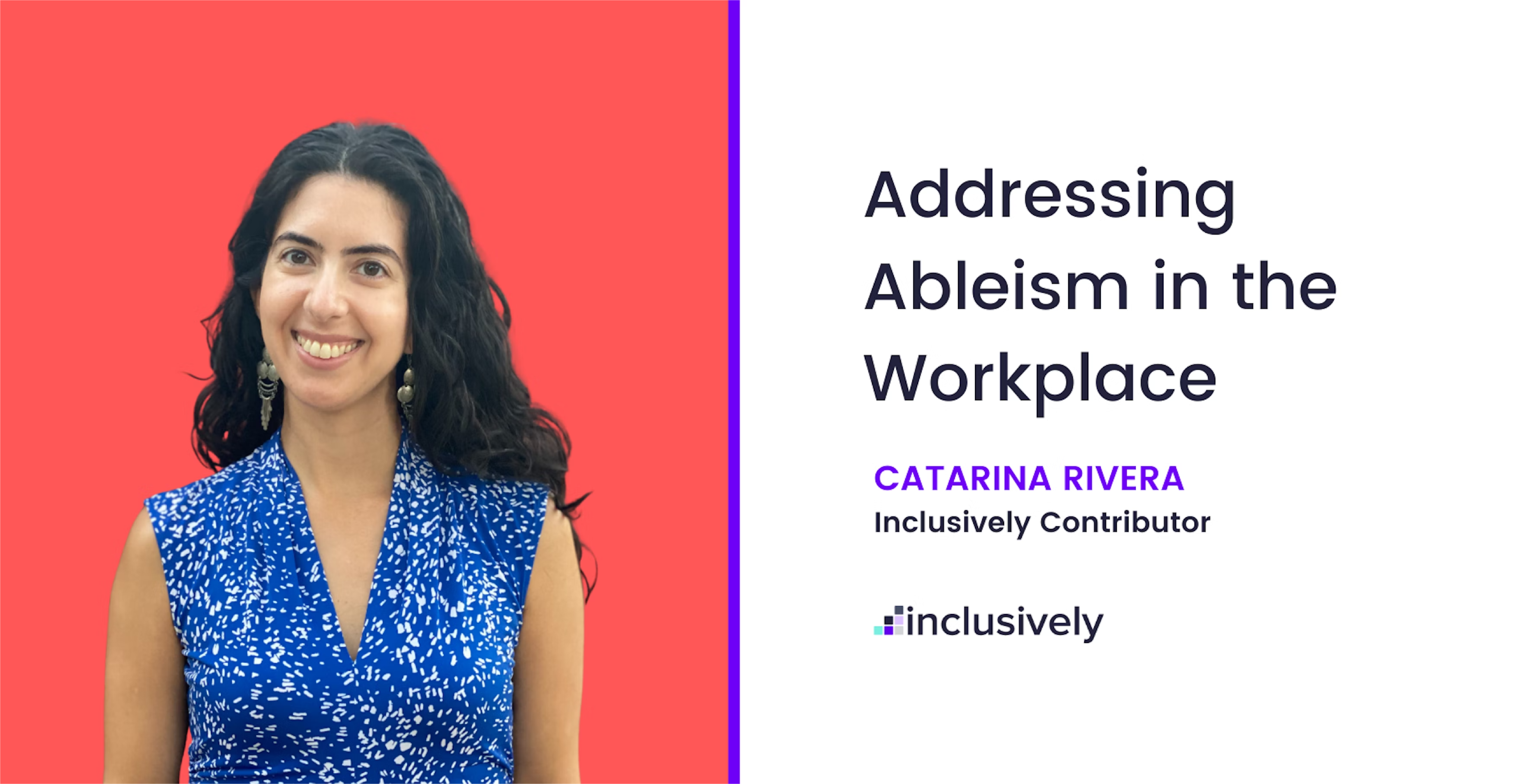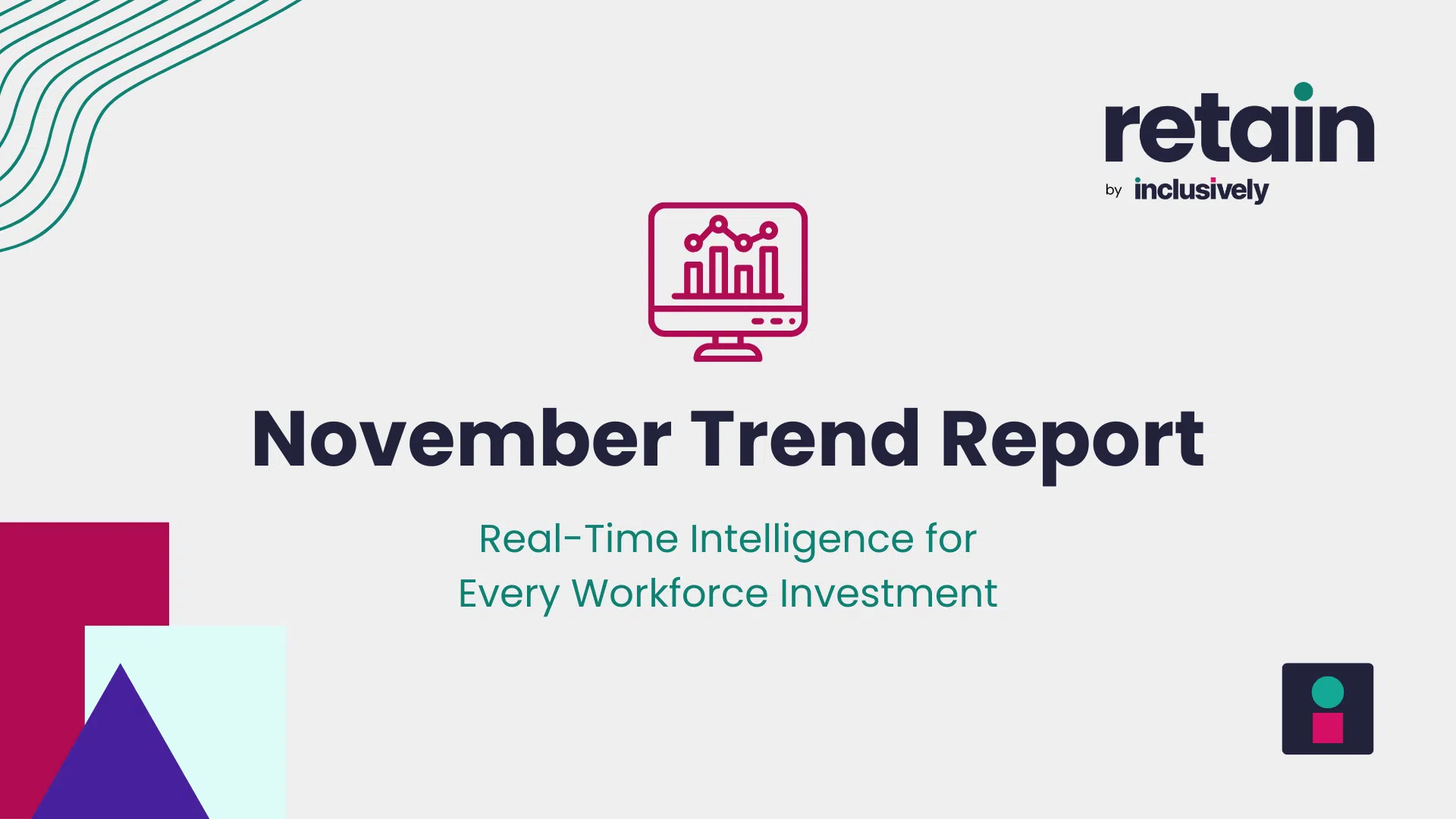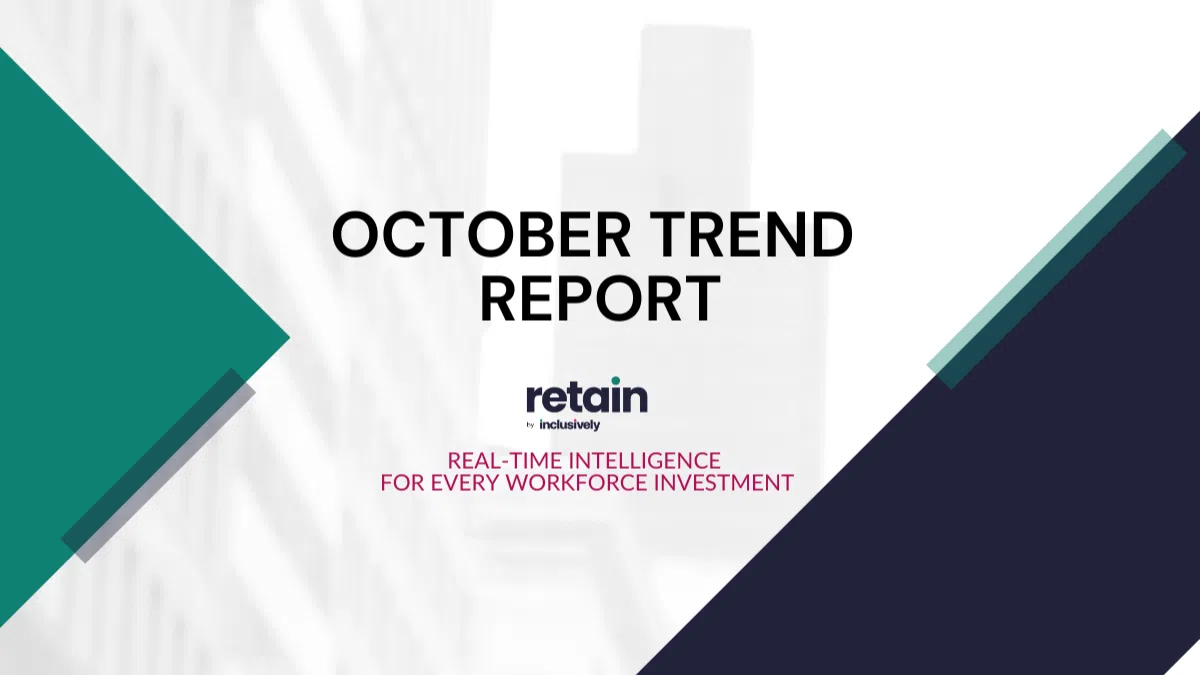How can employers and disabled professionals address ableism in the workplace? Catarina Rivera, public speaker, DEI consultant, and founder of Blindish Latina explores.
Ableism is one of the -isms that society doesn’t pay enough attention to. If you’ve never thought about ableism in the workplace, it’s time to do just that.
How can we address ableism in the workplace?
In order to truly address ableism in the workplace, we first need to think about what the ultimate goal is. What are we working towards? For me, the ultimate goal is to create disability inclusion: a workforce where accessibility is designed into every area of a company and into all processes. Where inclusion and accessibility are prioritized at the beginning of every new process, product, project, or initiative. When we make inclusion the goal, we go beyond creating diversity and hiring more disabled employees. We go beyond accommodations, which focus mainly on making sure that each employee can perform the functions of their role. We need to go beyond diversity and accommodations in order to have a workforce that is truly equitable.
How does ableism relate to privilege?
There’s a real privilege in being able to not see the barriers that exist for disabled people because you haven’t experienced those challenges yourself. When I share about my vision loss and how not having peripheral vision makes everyday moments like handshakes and colleagues handing me things stressful and challenging, and people respond, “Wow, I never thought about that” – it demonstrates that none of us know what’s going on with anyone else and that our worlds can look very different.
There’s a pressure on disabled employees to adapt and to create strategies to manage inaccessible situations, and these create unacceptable mental health costs for employees. It takes a toll and it creates more work for us. I know this situation well. When meetings were held in-person, I would always show up early to the meeting room to select the appropriate seat: near the front so I could hear and read lips, with my back to any window because of my light sensitivity, in the middle of the room in case the meeting had a lot of participation so I could hear others, and away from any obstacles that I could trip over. Another example is how I also spent mental energy to look down frequently in order to prepare for handshakes in professional settings because I don’t have peripheral vision. I wanted to avoid any miscommunications or negative assumptions such as being labeled rude or unfriendly, rather than explaining my disability to each person. Another area of difficulty was in the busy lunch room when colleagues would be walking around preparing their lunches, and I would try to navigate safely as a person with limited vision. Some days, I had to concentrate fully on the task and I would hope that no colleagues would try to strike up a conversation with me. All my concentration capacity would be focused on navigating a space with multiple people and preparing my lunch quickly so I could return to the safety of my desk- it might be easy for you, but it wasn’t easy for me. It was exhausting.
How can company leaders and managers address ableism in the workplace?
Focus on preventing microaggressions. Many microaggressions can occur in the workforce, and this is a primary area to focus on when addressing ableism. Take the time to consider the following:
- What kind of language will you use to talk about disability? The conversation should really be between person-first language (person with a disability) and identity-first language (disabled person). Identity-first language is my preference.
- Eliminate offensive words like handicapped and euphemisms like “differently abled” and “handicapable”, and others.
Prepare all employees to respond respectfully to disability disclosure. Everyone in the workforce should be ready and aware of how to respond if a colleague or direct report discloses a disability and how to respond in a supportive way that does not lead to people feeling unwelcome or triggered.
Accept that you won’t know the true percentage of disabled employees in your workforce. Design for disability inclusion and accessibility anyway. There’s a very real stigma surrounding disability. Employees may be afraid they will be viewed differently if they disclose their disability. Design for disability inclusion and accessibility anyway, and recognize that it will make your company a better place to work for everyone!
Become a champion and ally for disabled people. If you are non-disabled, take the time to listen to disabled employees. There’s no way to know the daily difficulties and barriers for disabled employees, unless you’re talking to them and you’ve created a safe space for open communication. Beyond that, take the time to educate yourself on disability, allyship, and accessibility. Become an internal champion in solidarity with disabled people and make your voice a loud voice for change.
Hire disabled employees. Work to eliminate discrimination in your hiring processes and to address inaccessibility. Find talented candidates by partnering with Inclusively, the professional network transforming the way candidates with disabilities, mental health conditions, and chronic illnesses connect to jobs and inclusive employers.
How can disabled professionals address ableism in the workplace?
Recognize that even though you might have accommodations in place, they will not prevent all challenges. I encountered an issue in the workforce where virtual meetings were being held without closed captions. I am hard of hearing, and I use captions in order to be able to fully understand the meeting and participate at the same level as everybody else. In this case, I had to advocate internally for months to raise awareness about the issue and inform colleagues about which virtual meeting platform was accessible to me. This was a lot of extra work for me as a disabled employee. One thing that helped was having a champion from another department who was a senior leader in the organization. We wrote an internal memo which we shared with Human Resources.
Develop relationships with colleagues one-on-one to build solidarity and activate allyship. If you’re dealing with a specific challenge, I recommend connecting with your colleagues one-on-one to let them know more about what your challenges are and build empathy and understanding. By creating solidarity with colleagues who can advocate for you, you relieve some of that advocacy burden for yourself. Consider activating allyship from your manager as well, if you feel safe to do so. Offer specific examples of what supportive allyship would look like for you.
Seek support from the disability community. Realize that you’re not alone and there is a strong, vibrant disability community of individuals and organizations. Follow disabled creators on social media to fill your feed with powerful, prideful disability energy. Learn about the history of disability rights and about disability identity.
Build your comfort level with self-advocacy. Self-advocacy and feeling comfortable to self-advocate is a journey. It’s taken me my whole life to become the loud voice that I am now, engaging in public speaking and advocating for the disability community overall. I have the emotional capacity to do so and this is what’s right for me. Honor what’s right for you and don’t compare yourself to anyone else.
Consider becoming an employee leader. If there is a disabled employee group, consider joining it and becoming an active leader in the group. If your company doesn’t have one, you could even be the one to create it. A disabled employee group can create power and visibility, and can be an effective way to advocate for change.
Addressing ableism takes all of us
What is ableism exactly?
Ableism is the idea that non-disabled people are more worthy than disabled people, more valuable, more talented. This leads to discrimination, stigma, and prejudice. It’s a false idea that is promoted within society and reinforced throughout the media. Plain and simple, ableism keeps disabled people out of the workforce and leads to discrimination against the disabled community. Even when disabled employees are in the workforce, they can face daily challenges related to ableism like microaggressions and inaccessible company cultures.
How does ableism even show up in the workplace?
Because we have a society that doesn’t talk about disability in a positive manner. Where ableist messaging is prominent and is deeply encoded in entertainment and media. A lot of people have internalized these messages about disability (such as disability is something that is bad or devastating), and it shows up in the workforce because it’s within people. It shows up in people’s language, attitudes, and unconscious decisions. One area that gets talked about a lot is hiring. We definitely need to address ableism in hiring and make sure that disabled people are not discriminated against and are offered the job.
We also need to address what happens after the hire. Disabled employees may feel afraid to disclose their disability, and might not request accommodations. Employers may not know who in their workforce is disabled, and this can unfortunately create a false idea that people with disabilities are not in the workforce, but we are.
The burden of the change work should not be solely on disabled employees. It’s very important for leaders, managers, and non-disabled employees to recognize that they need to be part of addressing ableism and to commit to doing so. To take consistent action beyond just talking about it.
Consider your role in the workplace. Identify your spheres of influence- what it looks like for you and what you’re able to take on and do is different than it is for somebody else. If you’re able to be a leader within your internal culture, then your sphere of influence is wider. Even as a manager, you can determine the culture of your team and you can educate yourself. Ideally, a company would develop a strategy to address ableism within the entire organization, however, an individual can still make a big difference.
External support can also be very beneficial when working on addressing ableism. Bringing in an expert or consultant like me can help you navigate this process, gain the expertise and resources needed to build a strategy, and help raise internal awareness about the importance of the initiative.
Remember the power of storytelling. Making disability real to others is one of the simplest ways to activate empathy and understanding. Because the first step to addressing ableism is that people need to care. Everyone needs to actually care about disability and the experience of employees with disabilities. Once we start there, we can go anywhere.
To continue this conversation, I’ve posted this ableism blog in Inclusively’s new Community Portal, created for job seekers, employers, and partners to discuss disability employment topics, share experiences–and grow personally and professionally.

Overview of a candidate’s job search indicators, including Senior Level, Marketing, Full-Time, My Success Enablers with a row of icons
How Inclusively Works
Inclusively’s accessible employment platform and job matching technology goes beyond traditional search criteria and allows candidates to connect with opportunities that match their experience, skills, and workplace accommodations – called Success Enablers. Some examples include screen readers, noise-canceling headphones, an emotional support animal, accessible parking and entrances, braille signage, and dozens more.



